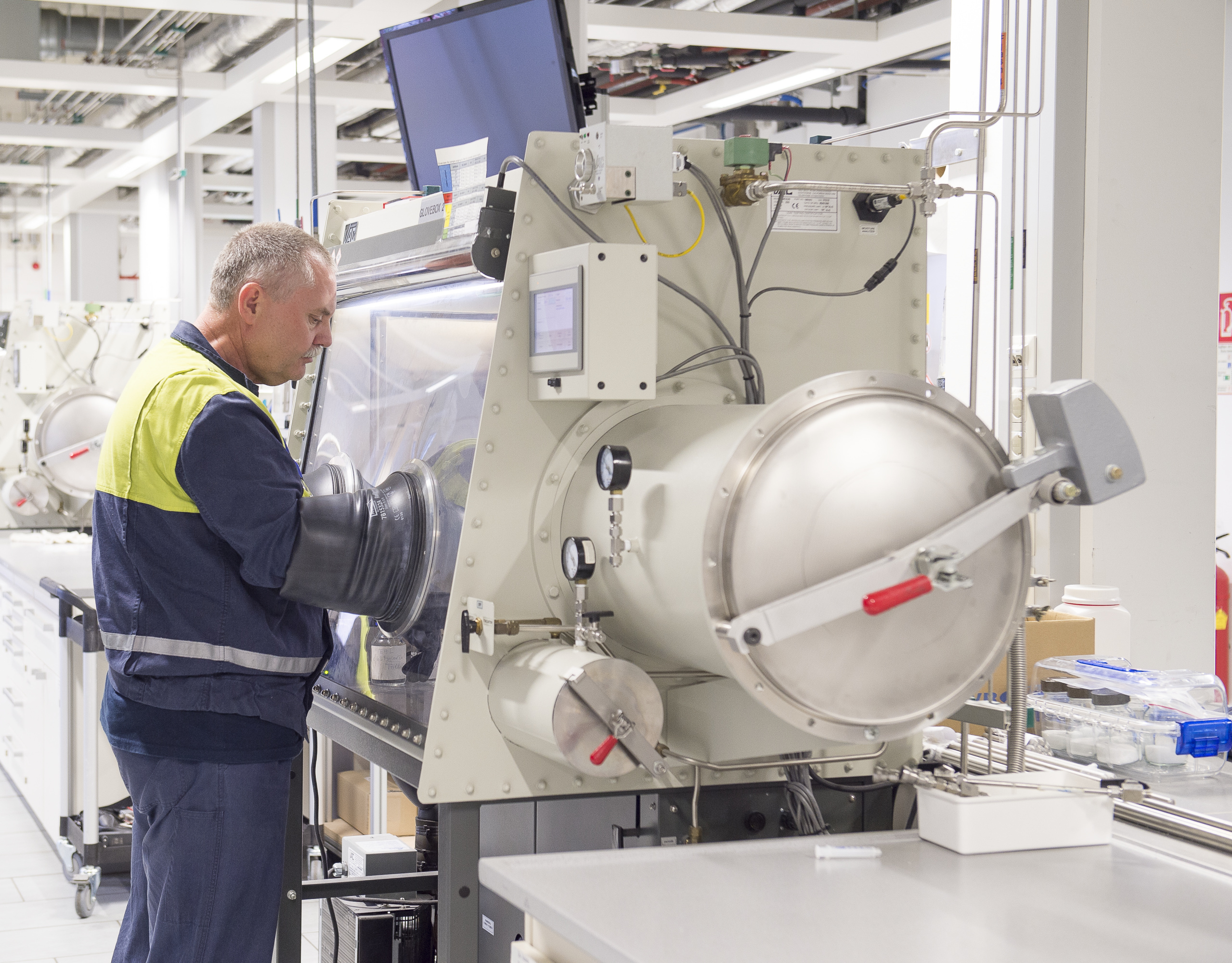Borealis Agrolinz Melamine GmbH
Sector
Secondary sector: Borealis is a leading provider of innovative solutions in the fields of polyolefins, base chemicals and fertilizers.
Country
Austria
Web-site
https://www.borealisgroup.com/
Specialization
Borealis Agrolinz Melamine GmbH (BAM) produces melamine and fertilizer and thus is part of the NACE section DG, code 241, manufacturer of basic chemicals. BAM is part of the Borealis Group, which is a multinational company with currently about 6,900 employees located across Europe and in North and South America. The group is owned by the International Petroleum Investment Company (IPIC) of Abu Dhabi, which holds 64% of the company, and by the OMV Aktiengesellschaft, which holds 36%. OMV is the leading oil and gas group in central Europe. The IPIC is the dominant partner given that it holds another 20% of the OMV. Another major shareholder of OMV is the Austrian Industry-holding Stock Corporation (Österreichische Industrieholding AG, ÖIAG), which administers the investments of the Republic of Austria in partially or entirely nationalized companies.
Expected results
The aim of the measures taken was to ease the physical burden on workers and to improve their living and working conditions.
Main motives for the decision to implement the age management measures
BAM employs 700 people with an average age of 42.11 years. The vast proportion of employees is male, about 90%. More than half are full-time employees and 367 are working part-time. The group of part-time employees also includes about 300 blue collar and 60 white collar workers working on the five-shift model. All shift workers are men. This group is particularly important for age management at BAM as shift work – particularly night shifts – become more physically demanding with increasing age. The classic career of a shift worker at BAM starts at the age of 15 with an apprenticeship of about 3.5 years’ duration. Every year, 6 to 8 former apprentices start working for BAM right after their vocational training, which is the majority of all apprentices. Staff turnover is low. This also means that, in the near future, a number of employees will reach retirement age.
Age management dimensions
(measures taken)
While age management at the Borealis Group has always made use of generous regulations for early retirement – particularly at BAM and its predecessor AMI – there has also been a movement to maintain older workers in the workplace by creating sustainable work processes and adapting work practices to take into account employees’ needs. For this purpose, AMI, the predecessor of BAM, introduced a ‘productive ageing program’ in 1997 (see Eurofound 2009 for details). This program reviewed working conditions for older and younger shift workers, provided health training, and helped to adapt the environment ergonomically. This program has paved the way for the introduction of the five-shift model.
Flexible working time practices:
- the adjustment of shift schedules;
- special measures of daily or weekly working hours reduction;
- particular models of job rotation or relief for older employees from overtime and other extra work.
Our way towards the age management
A major change in age management practices was the introduction of a new shift model, initiated by the workers representatives in collaboration with the Austrian Chamber of Labour (Arbeiterkammer). The aim was to ease the physical burden on workers and to improve their living and working conditions. The changes included:
- a switch from a four shift model with frequent shift changes and interruptions to a five shift model with continuity.
- those employees who started to work at BAM before the introduction of the new shift model were compensated for the resulting cut in their weekly working hours. These workers receive payment for 36 hours while now working a little less than 34 hours.
- a reduction of weekly work time from 38 hours to 33.6 hours.
- reduction of night shifts from between three and five in a row to a maximum of two.
- shift breaks increased to up to four days after five or six days of work.
- every shift worker now has two weekends per months off (increased from one weekend off every six weeks), either Friday to Monday or Saturday to Tuesday.
Currently this option is available for workers from the age of 58 for five years. As mentioned in the national report, the legislators’ intention is to create more attractive working models, where the regular working time is halved during the entire partial retirement phase (continuous model). At BAM, as is the case in most firms, the block model is favoured, where the partial retirement phase is divided into two parts of equal duration, a working phase with regular working time and a spare time phase. About 95% taking partial retirement chose the block model. In 2010, a major agreement between the social partners on the framework for partial retirement confirmed the use of the block model and gave rise to more partial retirement. Another policy supporting age management is to use skills development and training in order to adapt workers to new work-related, mainly technical, innovations. On top of legal requirements such as mandatory educational leave, every employee is eligible for training measures worth the equivalent of €1,000 per year. Some function levels have training budgets above that amount. In 2011, there was a particular emphasis on skills and training from the employers’ side targeted at all employees. Examples of skills improvement measures are the introduction of a Technical Training Organization and the involvement of a Technical Trainer within each department. The Technical Training concept also implies the transfer of knowledge from older to younger workers. A major concern for employer and worker representatives alike is how to integrate time for training into the shift schedule. Employers, workers representatives and employees are in a constant dialogue to guarantee the continuity of the planning.
Strengths and weaknesses of the chosen approaches
Strengths
- increasing job satisfaction considerably and lowering rates of absenteeism;
- enhancing sleep quality and making recovery from night shifts easier;
- general ability to work improved (by 20%), particularly among those aged 50 years and over;
- the model also serves to prevent work-related illnesses makes shift work more attractive to younger workers;
- more staff is needed (plus 10 % workers).
Weaknesses
- early evaluations of the program show that workers are as likely to consider quitting the job or take early retirement as they did before the reforms.

Activities to sustain this initiative
The shift model reform was supported by the productive ageing programme. Ergonomic improvements included reconstruction to improve climatic and other working conditions. Furthermore, special health training was provided, particularly adjusted to the needs of night-shift workers. A fitness centre was established at BAM premises which are open around the clock. Other fitness training programmes offered by BAM include gymnastics and organized running and walking courses. Rooms were established for recreation and relaxation. The canteen started to offer healthier choices and cooking courses were either offered to employees or attendance was subsidized. All these measures, including the productive ageing programme and the five-shift model were supposed to delay (or replace) early retirement decisions of elderly workers. However, early evaluations of the programme show that workers are as likely to consider quitting the job or take early retirement as they did before the reforms.
The “Aha!” moment
Health and safety must not end at the factory gate! These are topics that are up-to-date for all of us around the clock.
Monitoring system of the effects
The Group Strategy 2035 serves to monitor all measures introduced.
Borealis’ new Group Strategy 2035 builds on the company’s values and core competencies to ensure sustainable growth in the future. The most important dimensions of the new strategy include the principle of “leading from the core” with a focus on sustainability, employee management, excellence, as well as the transition to a circular economy and the development of an even more customer-oriented organization that generates added value on a global scale.
Beneficial effects of the measures
Reaction from employees to the new work model was very positive, increasing job satisfaction considerably and lowering rates of absenteeism. An early evaluation of the shift reform programme shows that aside from enhancing sleep quality and making recovery from night shifts easier, the general ability to work improved (by 20%), particularly among those aged 50 years and over. The five-shift model is very important particularly for older workers, as it enables them to better maintain their health and to recover from shift work. At the same time, the model also serves to prevent work-related illnesses. Thus it also makes shift work more attractive to younger workers, which again is an advantage for BAM when recruiting on the labour market.
At the same time, BAM makes use of several provisions for early retirement (Frühpension) and increasingly also of part-time work models for partial retirement (Altersteilzeit). On top of the numerous options for early and partial retirement available in Austria, BAM is obliged to insure employees who engage in heavy physical work at night under the Heavy Night-work Act (Nachtschwerarbeitsgesetz, NSchG). To insure under this scheme, employer and shift workers pay into a separate fund. The contribution amounts to 2% of the taxable wage base and is calculated in line with social insurance legislation. The benefits include top-up pension payments equivalent to invalidity pensions. Aside from additional retirement pension payments, the insurance provides other special protective measures and also compensates for particular hardships. Potential benefits cover, for example, supplementary leave, additional breaks and special pensions. This scheme allows early retirement from the age of 57 onwards, provided that the applicant has worked 20 years in a shift model or 15 years in a shift model that includes night shifts. At BAM many blue collar workers retire early based on this regulation, while white collar workers, if retiring early, tend to claim pensions based on the duration of their life-time gainful employment (Hacklerregelung). The Hacklerregelung allows for early retirement starting from the age of 60 years on, but is limited to several distinctive occupational groups.
Our recommendation
A particular focus should be to undertake a successful conceptualization of a late career management in order to make use of the know-how elderly workers have acquired. This should be accompanied by a shift in organizational culture to clearly recognize the added value of ageing for an organization.
All age management initiatives should include related health-promoting and illness-prevention measures. The continuous model of partial retirement is considered an appropriate measure to provide for a smooth transition from work life to retirement. At the same time, options provided for those who are above statutory pension age and still want to continue working should be made better known.


Based on: Eurofound: Impact of the recession on age management policies Case study: Borealis Agrolinz Melamine GmbH, Austria
All images included in this page: Copyright Borealis
Would you like to download this case study? Please, proceed here.
